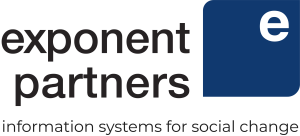Program Navigation Fosters Program Fidelity
“Even the smallest organizations can find ideas…that allow them to know whether they’re making a difference or not. That’s a reasonable minimum requirement for anyone who aspires to do good, applies for charitable status from the IRS, and asks others to commit their money or time,” Mario Morino aptly said in Leap of Reason. In essence, he’s saying that if you are using someone else’s money to try to make a difference in someone’s life, you need to be able to show that you can in fact make a difference.
Yet we know that more commonly, “organizations are drowning in a sea of unactionable data. So they can’t monitor what needs to be monitored crisply, therefore they can’t manage with high intentionality, they can’t learn in order to adjust, they can’t adapt and improve—and they can’t deliver what they promise,” according to David Hunter, the author behind Working Hard & Working Well. These powerhouse authors have led the charge in social sector performance management and we encourage you to read their work in full. As a social venture focused on helping nonprofits drive better impact, we can leverage some of our in-depth expertise to offer an approach that helps organizations monitor their performance levels. One approach that makes a big difference is adherence to a proven program model otherwise known as ensuring high program fidelity.
So, what exactly is program fidelity? “Fidelity is the extent to which an intervention is delivered as intended” or follows a program model, according to research from U.S. National Institutes of Health’s National Library of Medicine. It’s a structure that aims to preserve the components of evidence-based practices that directly impact the success of desired outcomes. In short, program fidelity helps human services organizations reproduce results and understand the elements within a program that leads to radically better outcomes.
Why is that important you may ask? Even if your program is not evidence-based, program fidelity ensures that the elements of any program model are carried out as intended. Monitoring program fidelity ensures confidence in quality services and allows for easier outcomes measurement. If the services provided do not stay true to a program model, the clients who benefit do so by accident, without knowing how and why. This eliminates the possibility of reproducing it. Without fidelity, case managers, data analysts, or those working to evaluate and measure outcomes cannot isolate any of the variables to understand their impact. In essence, “knowing if an intervention was implemented as planned is fundamental to knowing what has contributed to the success of an intervention.”
In addition, private and governmental funders are increasingly insisting on evidence-based practices. As a result, social workers have to be able to measure and report on the success of their model of care. With Exponent Case Management, human services agencies can easily collect and analyze the data needed to enable drastically better outcomes. We’re excited for the latest release of version 18 which includes an updated take on program navigation.
What is Program Navigation? It’s a system of checks and balances that guides agency staff as a client moves through the program’s model of care. It walks staff members through a series of steps that lead to overarching goals or milestones. A clearly documented process flow, allows them to see when a client meets the required criteria and guides them through the next steps. In doing so, the fidelity of the program model is supported while simultaneously ensuring compliance with standards.
How can Program Navigation help your organization?
- Program Navigation helps your frontline staff understand the requirements of each stage within a program with ease which in turn helps them to manage their cases.
- It ensures that clients are ready to move to the next stage and can help to optimize their success by adhering to a proven model of care.
- Program Navigation enables consistency of care throughout your programs regardless of which staff member is assisting the client.
- It allows staff members to reclaim their day with automated workflows and documented guidance at every stage
- It enables adherence to the program model which in turn will help you measure if the model is effective because data is going collected in a similar manner across the organization. This allows you to compare apples to apples.
- Staff members can be alerted and intervene when a client is outside the range of those evidence-based practices. For example, the ideal length of time in a job search.
- It enables you to validate theories such as “high-risk teen clients between the ages of 13 and 17 have 30% fewer school absences if they attend 2 life skills classes per week for 8 weeks”.
The great news is that this newly designed and optimized navigation is already available to Exponent Case Management customers at no additional cost. It’s part of the improvements we continually strive toward to provide changemakers on the frontlines with the right tools to drive change.
If you want to use Program Navigation to help your staff move through their day with ease while adhering to program fidelity but you don’t have a well-defined model of care in place yet, we can help! Our team of experts can define and create your program process, implement stages, and put everything you need in place in order to track it effectively. Through our strategic planning engagements, we take the time to deeply understand your business processes and build a solution tailored to your organization based on evidence-based best practices. Contact us to learn more or schedule a demo today!

